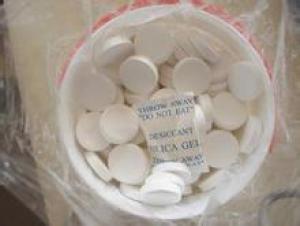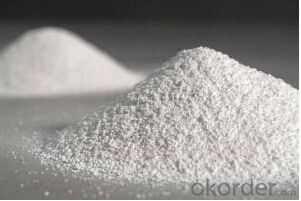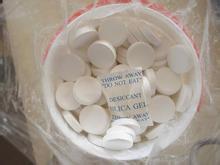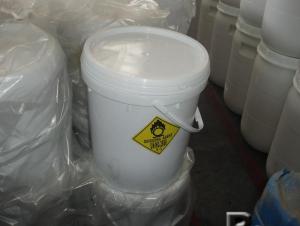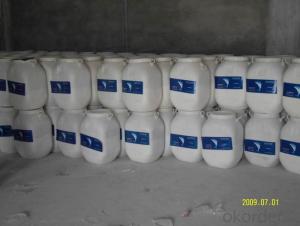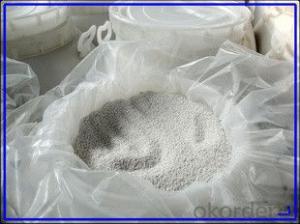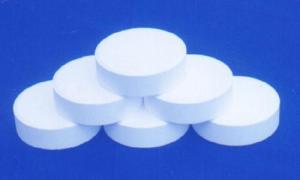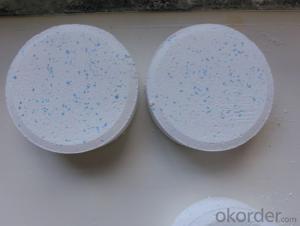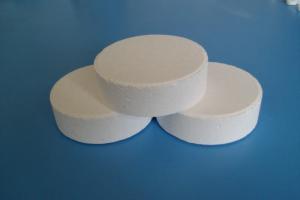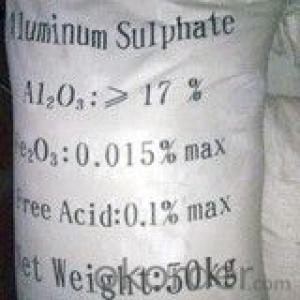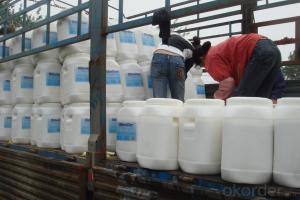drinking water chlorine tablets TCCA ISO Quality
- Loading Port:
- Tianjin
- Payment Terms:
- TT OR LC
- Min Order Qty:
- 22 m.t
- Supply Capability:
- 1800 m.t/month
OKorder Service Pledge
OKorder Financial Service
You Might Also Like
TCCA 90% Powder, Granular, Tablets
Introduction:
CNBM –TCCA White tablet with irritant chlorine odor. Slight solute in water. TCCA is the organic compound with the formula (C3Cl3N3O3). It is used as an industrial disinfectant, bleaching agent and a reagent in organic synthesis. This white crystalline powder, which has a strong "chlorine odour," is sometimes sold in tablet or granule form for domestic and industrial.
Specification:
Chemical Name | Trichloroisocyanuric Acid |
Molecular Formula | CONCL3 |
CAS Number | 87-90-1 |
Avaliable Chlorine %min | 90.00 |
Moisture content %,wt,Max | 0.30 |
PH Value (1% solution) | 2.7~3.3 |
Solubility 25℃ Water | 1.2g/100g |
Solubility 30℃ Acetone | 36g/100g |
Specific Gravity | 0.95(light)/1.20 |
Granular Particles Size
Mesh | 5~8 | 8~30 | 20~40 | 20~60 |
Tablets Forms
Weight | 200 gram | 150gram | 100gram | 50gram | 30gram | 20gram | 15gram | 10gram |
Diameter(mm) | 76 | 70 | 50 | 42 | 30 | 30 | 30 | 30 |
Height(mm) | 25 | 21 | 26 | 27 | 22 | 16 | 12 | 8 |
Multi-Functions
We made multifunctional tablets according to customers’ needs. For Instance, we press TCCA 90% granular with chemicals such as Boric Acid,. Sulfate Copper, Sulfate Aluminum And PAC.
Packing:
Granular& Powder:
50KG PLASTIC DRUMS/ FIBER DRUMS.
25KG PLASTIC DRUMS/FIBER DRUMS.
1000KG BIG BAGS.
Or any other packages suggest by customers.
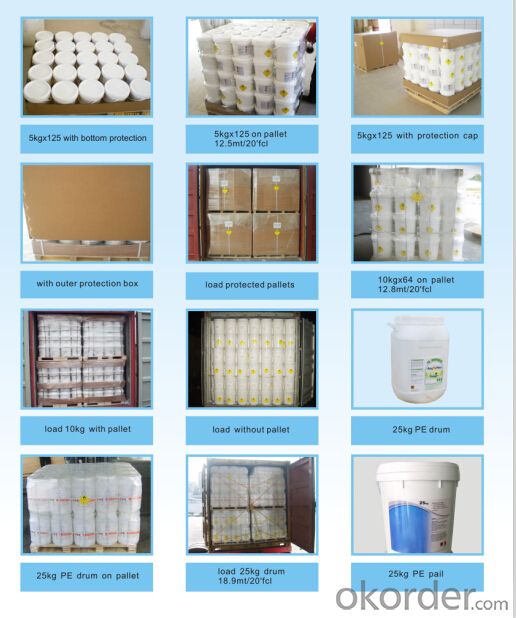
Tablets:
Inner Packing:
Individually Wrapped for 200gram,150gram, 100gram
1kg Plastic tube for 200gram
1kg plastic bottle & 5kg plastic bottle for smaller tablets
Outer Packing:
50KG,25KG,10KG, 5KG plastic Drums.
Or any other package specified by customers, such as fiber drums or cantons.
- Q: Briefly define a homogenous catalyst? Help please!?
- Define Homogenous
- Q: Is the reaction of the exhaust purification of cars (carbon monoxide and nitrogen
- NO + 2CO = 2CO2 + N2 reaction is exothermic. Conditional catalyst
- Q: the heterogenous catalyst ZSM-5 IS used to convert ?
- Zeolite-based heterogeneous catalysts are used by industrial chemical companies in the interconversion of hydrocarbons and the alkylation of aromatic compounds. A very good example is the zeolite ZSM-5. This zeolite, developed by Mobil Oil, is an aluminosilicate zeolite with a high silica and low alumininum content. Its structure is based on channels with insecting tunnels. The aluminium sites are very acidic. The substitution of Al3+in place of the tetrahedral Si4+ silca requires the presence of an added postive charge. When this is H+, the acidity of the zeolite is very high. The reaction and catalysis chemistry of the ZSM-5 is due to this acidity. The ZSM-5 zeolite catalyst is used in the petroleum industry for hydrocarbon interconversion. An example use is in the isomerizations of xylene- from meta to para-xylene. The acidic zeolite promotes carbocation isomerizations. There are two suggested mechanisms for this type of isomerizations. Firstly shape may play a role. Perhaps para-xylene has a shape which allows it to diffuse rapidly through the zeolite structure, whereas as meta-xylene takes longer to pass through the zeolite and thus has more opportunity to be converted into the para-xylene. Secondly, is that the orientation of reactive intermediates within the zeolite channels favors specifically para-xylene.
- Q: in my 99 ram 2500 v8 5.9 that code came up, not sure what to do about it or what it could be any ideas or help with be great thanks
- In after Robert M phaggotry. Oh, like that first poster said, be sure there aren't other faults causing the rear O2 sensor to pick up all that O2 in the exhaust...such as a rich-running engine.
- Q: My chemistry teacher wont tell me because it's in the higher course. And i'm not waiting a whole year to find out. And also, google is being a gimp about it. So thanks a lot if you know, I only have basic chemistry knowledge btw, lumen'ss terms if you can.
- MAD = Mutual certain Destruction you could injury us, of direction. yet you could no longer injury us till now we, even from the grave injury you too. we can be lifeless, we understand that. yet you will no longer stay to confirm and revel in it. what would be left of the two one human beings will ought to combat the subsequent war with sticks and stones. 3 skill of dropping the bomb: by skill of airplane, by skill of submarine launch and by skill of ICBM Inter Continental Ballistic Missile. As the two events found out war exchange into certain destruction, neither fairly needed that. We have been given fairly near to nuclear war, exceedingly throughout the Cuba disaster. yet provided that a nuclear war might propose the certain finished destruction of and the U.S. and the u . s . and West + East Europe, it must be prevented. in assessment to on the instant. have been non secular fans already have the bomb (Pakistan) or very near to construct one (Iran) and don't care a rattling concerning the outcomes. Allah will supply! (them with seventy two virgins each and each)
- Q: Thorough explanation pls.
- A catalyst is a substance that increases the rate of a chemical reaction.
- Q: Does the nature and quality of the catalyst itself change before and after the chemical reaction?
- No, but in some cases it may produce catalyst poisoning
- Q: give an example of how a catalysts speeds up the rate of reaction?? thank you!!?
- Catalysts speed up a reaction, but at the end of it, it's chemically unchanged. You usually have the same mass at the end of the reaction. For example.. Consider the decomposition of Hydrogen Peroxide: 2H2O2 -2H2O + O2 I hope you got how to represent it =D So.. This reaction is very slow. You can try it out in the lab. So when we add a catalyst, the reaction speeds up. The catalyst used here is MnO2.. Manganese dioxide. Well.. The Enzymes in our body are also Catalysts. They speed up the Biological Reactions taking place inside out body. I hope this answers your question. :) Cheers
- Q: What chemical reactions can water do the catalyst?
- Many solid and solid reactions can be converted into reactions between liquids, which speeds up the reaction rate, and perhaps the water here is the catalyst.
Send your message to us
drinking water chlorine tablets TCCA ISO Quality
- Loading Port:
- Tianjin
- Payment Terms:
- TT OR LC
- Min Order Qty:
- 22 m.t
- Supply Capability:
- 1800 m.t/month
OKorder Service Pledge
OKorder Financial Service
Similar products
Hot products
Hot Searches
Related keywords




